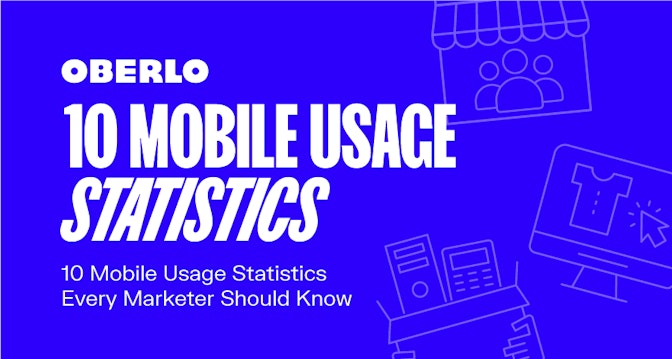Whether you’re just getting started on your entrepreneurial journey or looking to branch out into new marketing channels, you may be wondering how you can create a social media marketing plan that will help your ecommerce store grow.
It’s well known that social media is a marketing channel that many ecommerce brands have already used effectively to skyrocket their stores’ growth, so we’ve created this article to provide you with some tips and tricks to help you find that same level of success. Whether you plan to use Facebook, Snapchat, or Instagram for business, we’ve got you covered.
Let’s go!

Did you know you can sync your Instagram and Facebook sales with your Shopify store? Build, track, and manage all your campaigns in one place. Live that omnichannel life.
GET A FREE TRIALWhy Create a Social Media Marketing Plan?
Benjamin Franklin is credited with an old saying: “By failing to prepare, you are preparing to fail.” This sentiment is especially true when you’re marketing your ecommerce business. We mentioned above that there are several ecommerce brands that have already established themselves, which means it won’t be easy to make your store stand out from the crowd.
If you want to maximize your chances for success, it’s critical that you create a social media marketing plan that’s super effective.
Creating a social media marketing plan that’s well thought out will help you grow your ecommerce store’s reach, engage with your existing customers, and ultimately allow you to generate more sales. Once your store is generating a steady stream of revenue, you’ll be able to scale your marketing efforts even further, which will help you to further skyrocket your growth.
Creating Social Media Marketing Goals

These goals will not only help to shape your social media marketing strategy, but also allow you to gauge the success of your marketing efforts. If you haven’t established these goals, you won’t be able to measure your ROI or prove that social media marketing is a worthwhile tactic for growing your business.
When you’re establishing goals for your social media marketing plan, we advise against selecting vanity metrics, such as likes and retweets, as your main metric for success. While these are nice to see (and worthwhile to measure), they don’t directly affect your business’ growth. Instead, we recommend that you measure metrics that are likely to lead to sales, like number of leads generated or conversion rate.
If you decide to measure the number of leads generated through social media marketing, we advise adding a unique discount code to your social media posts. This will help you understand how you acquired your customers. If you see that a discount code from a specific post on social media is being used more than others, it’s a good indicator that the content of that post resonates well with your audience.

Got an Instagram following? Turn it into cash with our social media monetization ebook.
MONETIZE YOUR INSTAGRAMEach goal that you set for your social media marketing efforts should relate to all of these points. Here’s an example of a goal that follows the S.M.A.R.T. framework:
“I want to use social media marketing to promote the latest products that I’ve added to my store. The main channel that I’ll focus my efforts on will be Facebook, and I’ll grow my audience with compelling content, including posts, images, and videos. When promoting my products, I’ll post an appealing image of the product accompanied with a short description of the product’s main features. Within one month, I want to achieve at least one sale per post.”
While this example is catered specifically towards an ecommerce entrepreneur who has just started their store, it gives you a good idea of how you can apply the S.M.A.R.T. framework to your own social media marketing plan.
Launching and Optimizing Your Social Media Accounts

If you’ve already tried social media marketing for your business, make sure that these accounts are optimized to help you reach your goals. This isn’t a difficult task to accomplish, and it can pay off once your social media marketing efforts scale.
Start with your posts. Whether you’re using text or images, optimize them for each network that you’re posting on. If you’re posting on Instagram, try using hashtags, as they’ll help you grow your reach.
You can also cross-promote your social media accounts. If your Snapchat following has skyrocketed, mention to your audience that you’re also posting on Instagram and Facebook. This will give your audience more ways to engage with your content and offers you a wider social media reach overall. Double win!
It’s also a good idea to include a direct link to your ecommerce store in the bio sections of your social media accounts. This allows people who love your content (but aren’t aware of your brand) to take a look through your products and potentially make a purchase.
Gaining Inspiration for Your Social Media Marketing Plan

For example, here’s WeWork’s account:

You can also use your audience to gain inspiration for your social media content. Look at the way your audience engages with social media, and try to emulate this style. It’ll be familiar to them, and it’ll help you send a message that resonates. If you see that a specific type of post is popular, focus your attention on creating similar content – it’s the best way to reach your goals quickly.
Don’t be afraid to analyze what industry leaders are posting on social media when you’re looking for inspiration. While it’s unlikely that you’ll be able to reach their level of engagement at first, this is your end goal, so it’s good to understand what goes into a successful social media marketing strategy. We’ve already created an article about the best examples of Snapchat marketing, but there are so many brands that are excelling at social media marketing. All you need to do is look!
Bolster Your Social Media Marketing Plan With a Content Calendar

When creating your content calendar, it’s essential that you ask yourself these four main questions:
- How frequently will I post on social media?
- What types of content will I post on social media?
- How will my social media posts entertain and inform my audience?
- How will my posts help me achieve my goals?
We recommend writing these questions down and referring to them every time you post something on your business’ social media accounts.
If you’re looking for a platform to create your social media content calendar, there are several options available. Both Buffer and Hootsuite are free to sign up for and allow you to schedule social media posts in advance based on the platform of your choice. This means that you won’t have to worry about posting everything manually at specific times.
When you’re using a social media scheduling platform, we recommend that you schedule all of your posts at the start of the week. They’ll roll out at the times you set in advance while you focus on running the rest of your business.
If it’s your first time using social media for your business, make sure that you test out a variety of different content types. Fill up your content calendar, and make note of what content works best. This will help you to improve and optimize your future social media efforts.
Creating a Social Media Marketing Plan Using Templates
Now that you’re aware of the importance of creating a social media marketing plan, you can take the next step forward and use a social media plan template as a springboard to inform your approach.
There’s a lot of value to using a social media plan example to help plan your social media marketing. A template will help you visualize what your approach will look like, so when it comes time to launch your marketing efforts, you’ll have a robust vision in mind.
To help you out, we’ve put together our own template that proves creating a social media marketing plan doesn’t have to be complicated. It consists of various questions that will help you evaluate how your brand should communicate using social media. It was also designed with the S.M.A.R.T. framework as a foundation, so it’s highly actionable.
Copy and paste this template, and fill in your answers to these five questions:
| 1. What channel? Start by focusing on just one social media channel. Before you do anything else, make sure that the channel is important to your demographic.
Then, analyze your audience’s behavior on the channel:
This is a vital step because it will help you figure out exactly how effective this social media site will be for you. 2. What are my goals? Establish specific goals. This means figuring out which metrics you want to track to measure interaction and, ultimately, success (remember, avoid vanity metrics). Come up with both short-term (1-3 months) and long-term (6-12 months) goals so that you have a clear plan ahead of you. My short-term goals (1-3 months): My long-term goals (6-12 months): 3. What kind of content will I post? Based on your research in step one, think about what kind of content you’ll post and what your brand voice will be. You might consider developing a brand style guide that lays all of this out. Your style guide should align with your content calendar, and it’s also ideal to have a backlog of preplanned content ready to go, so you’re not scrambling to come up with new posts all the time. The four core topics I will post about: My brand’s voice is:
My brand’s voice is NOT:
4. How often will I post? Set a steady, predictable schedule for your content. This kind of consistency is crucial, so it’s definitely something to think carefully about when creating a social media marketing plan. By having a regular schedule, your followers will not only trust you more but also expect to see content from you at certain times. I plan to post ________ times a day/week/month. What type of content will I post on each day? On Monday, I will post… On Tuesday, I will post… On Wednesday, I will post… On Thursday, I will post… On Friday, I will post… On Saturday, I will post… On Sunday, I will post… 5. How will I measure my success? Always evaluate how your social media marketing is going. If you’re not achieving your goals or seeing interaction, then you’ll need to adjust your approach. This is why it’s so important to set specific, measurable goals – you’ll quickly know what’s working and what isn’t. You should also make some time to come back and review this plan in a few months, as your strategy and goals might change once you start creating content. I will measure the results of my content every (day/week/month). I will come back to review this social media plan in _____ months. |
Now develop your content and start posting it! Use your style guide and content calendar to keep the process streamlined. Also, be sure to interact with your audience. This will help you cultivate a loyal following and can even generate word-of-mouth marketing.
If you need to make any changes, you can use this social media marketing strategy sample we’ve designed as a tool to re-evaluate your social media presence.
Remember to Test, Evaluate, and Optimize Your Social Media Marketing
The world of social media is ever-changing, and if you truly want to succeed in growing your business, your content should be dynamic. In ecommerce, you’re fighting with thousands of other brands for your audience’s attention, and you can win them over by delivering a constant stream of compelling, unique content.
It’s essential that you’re tracking the performance of your social media marketing efforts and testing what works best for your audience. Whether you decide to use UTM codes and measure your performance on Google Analytics or opt for the built-in analytics that Buffer or Hootsuite offer, you can use the data from your campaigns to optimize for the future. If you want to stay on top of the game, it’s essential that you’re constantly testing, constantly learning, and constantly growing as an entrepreneur.
Now you know everything that you need to create a killer social media marketing plan to grow your business. Take the information in this post, and use it as inspiration for your own social media marketing efforts. We’re confident that you can create great content for your audience and start succeeding on social media.



